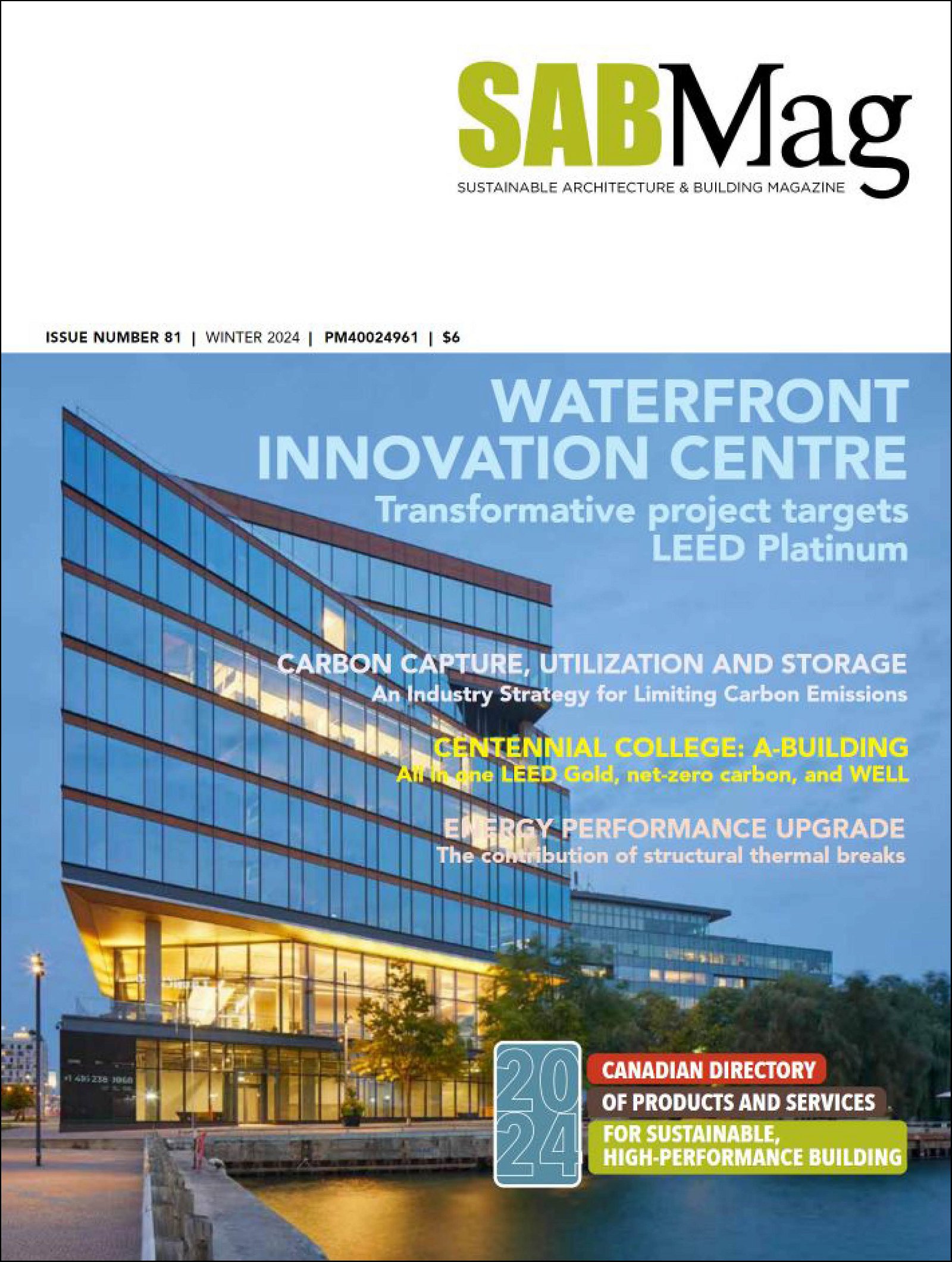CENTENNIAL COLLEGE: A-BUILDING EXPANSION Project Profile

SABMag | Winter 2024
Established in 1966, Centennial College of Applied Arts & Technology is the oldest publicly funded college in Ontario. A-Building is situated on the Progress Campus in Scarborough, about 25km east of Downtown Toronto.
The city of Toronto is located on the traditional territory of many nations including the Mississaugas of the Credit, the Anishnabeg, the Chippewa, the Haudenosaunee and the Wendat peoples and is now home to many different First Nations, Inuit and Métis peoples. This contributes to the cultural diversity of Centennial College; whose faculty and students speak more than 80 different languages.
CONTEXT AND CONCEPT
Centennial College envisioned its A Building Expansion as a living embodiment of Chief R. Stacey Laforme’s inspirational book Living in the Tall Grass: Poems of Reconciliation. The design response to this challenge is a celebration of the Mi’kmaq concept of "Two-Eyed Seeing" which harmonizes Indigenous wisdom and Western perspectives.
The A-Building Expansion, which houses the School of Engineering Technology and Applied Science programs completes the truncated corner of the site, forming a gateway into the campus. A new urban edge & landscaped area planted with biologically indigenous plant species enhances the public realm.
The prominent north & west facades act as a tool for storytelling, visually symbolizing the aspirations of the institution. Designed to embody the Indigenous concepts of the four-colour medicine wheel and the seven directions, the building also visually signals the coming together of Indigenous and Western aesthetics.
PROGRAM
The A Building Expansion sits lightly on the land, and is aligned with the four cardinal directions. The main entrance opens to the East, echoing the traditional approach of a longhouse. In this six-storey structure, the lower three floors contain flexible and accessible classrooms, labs, informal learning spaces and food services; while the upper three floors contain flexible workspaces for Faculty and Staff specifically planned for collaboration and student engagement.